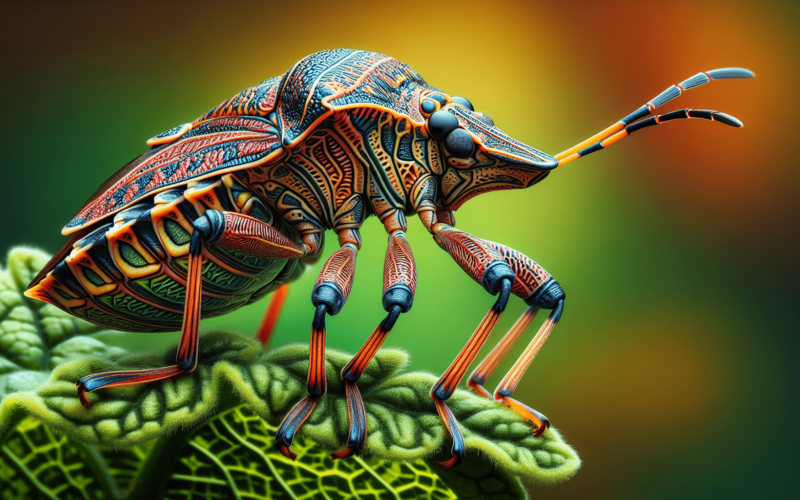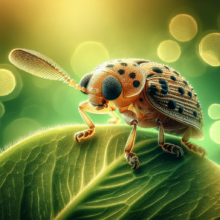Discover what classifies a bug in nature and technology. Explore the definitions, characteristics, and significance of bugs in our world.
Are Stink Bugs In The Beetle Family?

Have you ever encountered a pesky insect and wondered exactly what family it belongs to? Stink bugs are one of those critters that spark such curiosity. You might be asking yourself, “Are stink bugs part of the beetle family?” Let’s get to the bottom of this intriguing question together.
Understanding Stink Bugs
Stink bugs are commonly recognized by their distinctive shape and the foul odor they emit when threatened. These insects have a unique appearance that sets them apart from many other pests.
Physical Characteristics
Stink bugs typically exhibit a shield-like shape, which can vary in color. Most are primarily brown or green, although some species showcase vibrant hues. Their bodies are flat, and they often have prominent wings.
| Characteristic | Description |
|---|---|
| Shape | Shield-shaped |
| Color | Brown, green, or colorful |
| Wings | Prominent and folded over body |
| Size | Approximately 0.5 to 1 inch long |
Beyond their appearance, stink bugs possess unique mouthparts designed for piercing plant tissue, allowing them to feed primarily on fruits and vegetables.
The Beetle Family
To determine whether stink bugs belong to the beetle family, it’s essential to first understand what beetles are. Beetles, part of the order Coleoptera, have some key attributes that define them.
Characteristics of Beetles
Beetles are some of the most diverse creatures on Earth, boasting over 350,000 species. Here are some primary features that identify them:
| Feature | Description |
|---|---|
| Body Structure | Hard exoskeleton with a distinct division into head, thorax, and abdomen |
| Mouthparts | Chewing mouthparts, with many adapted for specific diets |
| Wings | Hard forewings (elytra) protecting softer hind wings |
| Transformation | Complete metamorphosis (egg, larva, pupa, adult) |
Beetles are remarkably versatile, found in a variety of habitats, and play significant roles in ecosystems as decomposers, pollinators, and herbivores.

Scientific Classification of Insects
To clarify whether stink bugs fit into the beetle category, we must look at scientific classification or taxonomy. The organization of living organisms follows a hierarchy that includes domain, kingdom, phylum, class, order, family, genus, and species.
Breakdown of Insect Taxonomy
To show you where stink bugs and beetles stand, here’s a simplified breakdown:
| Rank | Stink Bugs (Family: Pentatomidae) | Beetles (Order: Coleoptera) |
|---|---|---|
| Domain | Eukarya | Eukarya |
| Kingdom | Animalia | Animalia |
| Phylum | Arthropoda | Arthropoda |
| Class | Insecta | Insecta |
| Order | Hemiptera | Coleoptera |
| Family | Pentatomidae | Various families (e.g., Scarabaeidae, Carabidae) |
Analysis
From this table, it becomes quite evident that stink bugs and beetles belong to different orders. Stink bugs are members of the order Hemiptera, while beetles fall under the order Coleoptera.
The Order Hemiptera
Stink bugs are classified within the order Hemiptera, commonly known as true bugs. This group encompasses a variety of insects, including aphids and cicadas.
Unique Features of Hemiptera
Hemiptera distinctively possesses:
- Piercing-Sucking Mouthparts: Designed for extracting nutrients from plants or other insects.
- Homoptera and Heteroptera: This order is classified into two main subgroups. Stink bugs belong to Heteroptera, characterized by their hardened forewings and exposed membranous parts.
Common Types of Stink Bugs
In the realm of stink bugs, you’ll encounter several species, with the brown marmorated stink bug being one of the most notorious ones. Here are a few common types:
| Stink Bug Species | Characteristics |
|---|---|
| Brown Marmorated Stink Bug | Brown color with distinct white bands on antennas |
| Green Stink Bug | Bright green color, more common in gardens |
| Harlequin Bug | Colorful patterns showcasing red and black |

Why the Confusion?
You may find yourself wondering why people often confuse stink bugs with beetles. This confusion commonly stems from physical similarities. Some stink bugs may appear similar to certain beetle species, especially when viewed from a distance.
Misconceptions About Insects
It’s easy to lump insects into broad categories based on appearances or behaviors, but this isn’t always scientifically accurate. Here’s why:
- Similar Habitats: Stink bugs and beetles often inhabit gardens and agricultural areas, leading to mixed perceptions.
- Ecological Roles: Both play important roles in their ecosystems, often interacting with similar plants and acting as pests.
The Importance of Identification
Accurate identification of insects can be incredibly valuable, particularly in agriculture and pest control. Understanding the specific family an insect belongs to can guide appropriate management strategies.
Benefits of Clear Differentiation
- Effective Pest Control: Knowing whether you’re dealing with stink bugs or beetles can help you select the right insecticides or pest control techniques.
- Biodiversity Awareness: Learning about various insect families fosters an appreciation of biodiversity and encourages conservation efforts.
The Role of Stink Bugs in Agriculture
While stink bugs can be detrimental to crops, they are also essential players in the ecosystem. Understanding their impact on agriculture helps to address the difficulties they present.
Stink Bugs as Pests
Stink bugs, particularly the brown marmorated stink bug, have become notorious for feeding on a variety of fruits and vegetables, leading to agricultural losses.
| Crop Affected | Damage Type |
|---|---|
| Tomatoes | Fruit deformation |
| Peppers | Decreased yield |
| Apples | Internal browning and scarring |
The Natural Predators
Stink bugs do have natural predators that help keep their populations in check. Some of these predators include:
- Ladybugs
- Parasitic wasps
- Birds
Understanding both aspects—the damage they cause and the natural predators—can lead to more integrated pest management approaches.
Dealing with Stink Bugs
If you find stink bugs invading your home or garden, it’s important to know how to manage them effectively without causing harm to the environment.
Prevention Tactics
- Seal Entry Points: Keep doors and windows tightly sealed to prevent stink bugs from entering your home.
- Remove Attractants: Keep fruits and vegetables stored properly to avoid attracting these pests.
- Use Barriers: Consider installing physical barriers like mesh screens in gardens.
Control Methods
If stink bugs invade your space, various methods exist to control their populations:
| Method | Description |
|---|---|
| Hand Removal | Gently remove by hand or use a vacuum |
| Insecticidal Soap | Targeted sprays that disrupt their outer coating |
| Traps | Sticky traps can attract and capture stink bugs |
Conclusion
You now have a clearer understanding of whether stink bugs belong to the beetle family. The answer is no; stink bugs are part of the order Hemiptera, while beetles are classified under Coleoptera.
This distinction is crucial for effective pest management and maintaining the balance of ecosystems. Remember, knowledge is power, and identifying these creatures correctly is a step toward managing them wisely!
So the next time you come across one of these critters, you’ll know precisely what it is and how to handle it. Happy pest management!



